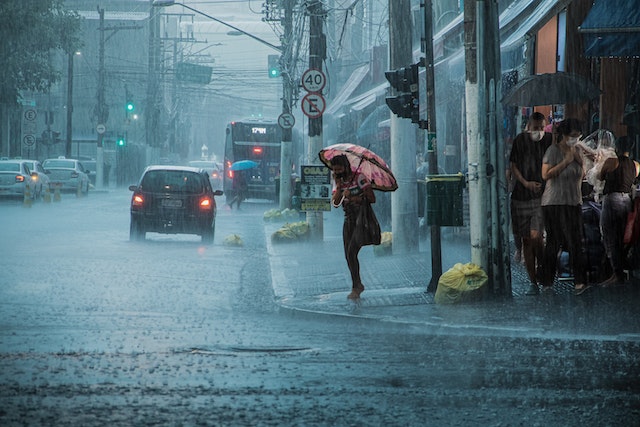Introduction: Global warming, driven by human-induced climate change, is altering weather patterns and leading to more extreme rainfall events across the globe. This article explores the connection between global warming and the increasing intensity of rainfall, highlighting the scientific evidence behind this phenomenon. 1. Warmer Atmosphere, Increased Evaporation: As the Earth’s temperature rises due
Introduction:
Global warming, driven by human-induced climate change, is altering weather patterns and leading to more extreme rainfall events across the globe. This article explores the connection between global warming and the increasing intensity of rainfall, highlighting the scientific evidence behind this phenomenon.
1. Warmer Atmosphere, Increased Evaporation:
As the Earth’s temperature rises due to greenhouse gas emissions, the atmosphere becomes warmer. Warmer temperatures accelerate evaporation, causing more water to evaporate from oceans, lakes, and land surfaces. This increased evaporation leads to a higher moisture content in the atmosphere, setting the stage for more intense rainfall events.
2. Increased Water Vapor in the Atmosphere:
The warmer atmosphere can hold more water vapor, which acts as fuel for rainstorms. As the moisture-laden air rises and cools, the excess water vapor condenses into clouds, eventually leading to precipitation. With higher levels of moisture in the atmosphere, there is a greater potential for heavy rainfall events and downpours.
3. Changes in Atmospheric Circulation:
Global warming influences atmospheric circulation patterns, which play a crucial role in the distribution of rainfall. As the climate warms, changes in temperature gradients can alter the behavior of jet streams and other atmospheric systems. These changes can lead to shifts in weather patterns, creating conditions that favor more prolonged and intense rainfall in certain regions.
4. Increased Convective Activity:
Convective activity, driven by the upward movement of warm, moist air, is responsible for the formation of rainstorms. With global warming, the atmosphere becomes more unstable, providing the ideal conditions for increased convective activity. This results in more frequent and intense thunderstorms and heavy rainfall events.
5. Climate Model Projections:
Climate models provide valuable insights into the future impacts of global warming on rainfall patterns. These models simulate various climate scenarios based on greenhouse gas emissions and other factors. The projections consistently indicate a higher likelihood of extreme rainfall events as global temperatures continue to rise.
6. Observational Evidence:
Observational records also support the link between global warming and extreme rainfall. Scientists have observed an increase in the frequency and intensity of heavy rainfall events in many parts of the world. These observations align with the expectations of a warming climate and provide tangible evidence of the changing rainfall patterns.
Conclusion:
The evidence is clear: global warming is contributing to more extreme rainfall events. Warmer temperatures, increased evaporation, higher water vapor content in the atmosphere, changes in atmospheric circulation, and heightened convective activity all play a role in intensifying rainfall. Understanding these mechanisms is crucial for adapting to and mitigating the impacts of extreme rainfall events. By reducing greenhouse gas emissions, implementing sustainable practices, and developing effective climate adaptation strategies, we can work towards a more resilient future in the face of a changing climate.

















Leave a Comment
Your email address will not be published. Required fields are marked with *